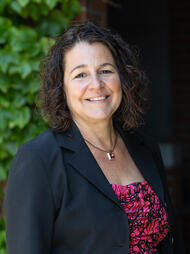Over the past month or so, throughout this global pandemic, our school has been diligently preparing to shift our program to the remote learning world. No easy feat. But with the dedication and nimbleness that our faculty has exercised, I believe we are ready for the return to learning, online, on Tuesday, April 14. Our students and parents should feel confident in the experience they are about to undertake at SMUS.
While I have been primarily focused on the work I do in my role in the school as Director of Academics, I have also been thinking about preparing my own three children, Claire, Cole and Cate, for remote learning – along with various home improvement projects and family games nights. Similar to parents and many staff across our school, I will also be navigating my own children and their learning plan at home while working full time to ensure that our educational team is effectively supported to implement our curriculum in a virtual world.
One of the characteristics of our SMUS Portrait of a Learner is empathy. So I started thinking about the remote learning day through the eyes of my children; their daily schedule and what success will look like at the end of the day. Adults will need to keep in mind that our children will not have the closeness of their friends; they won’t be hanging out at recess or break, getting together for help sessions in the library or Sun Centre, or dropping in to see their teacher for extra individual help. Their connections in this virtual world are going to be different.
We are going to have to pay close attention to how they adjust to this new normal for the time being and make sure we do our best in our homes to set them up for success.
Here are a few ways that we, as parents, can help support our children:
Build Consistency and Routine
As we indicated in our Remote Learning Plan – Community Guide, it will be important to establish consistency and routines. Consistency helps students focus, and starting with a daily schedule will help students know what to expect in their day. A daily schedule also helps other parents and caregivers to share duties. With breaks being built into the schedule, parents can tailor plans to meet children’s individual needs.
Parents with children of multiple ages have the extra challenge of balancing multiple workloads and learning plans. Delegating tasks to older students might be helpful to parents; the added responsibility might be inspiring for them and a great way to exercise leadership skills.
Create a Workspace
Setting up a workspace that can remain for a while will also be important. In my house, I am aiming for a well-organized space that is distraction-free. Whether it is in their bedrooms or in the living room, wherever it is in your house there should be ample opportunity to keep a good eye on how things are progressing. Ensuring that older students have all social media notifications off and commit to ‘learning hours’ will be key messages that need to be conveyed.
Encourage Activity Breaks
Throughout the day, there are opportunities for students to take breaks, just as they would with recess at school. Physical activity as a break is highly recommended: a quick walk or play outside (while observing social distance measures, of course), grab a snack, read, play a board game, or get really creative and engage in an online dance lesson! Our Physical Education faculty have been working hard to create ideas for activity in their lessons and we encourage our students to take advantage of those ideas. The use of a timer can help transition between activities. The discussion in my house around breaks will be avoiding online games and social media, as my children will have ample screen time during the day, but I know this will not be easy.
Check In After School
Ensure that you are engaging in a discussion with your children about their learning and what tasks they worked on at the end of the day. Asking them to share their Google Classroom with you and to share what they worked on will help you gauge their productivity. Through late-day conversations, our parents should gain a good idea of how things are going.
Reach Out to SMUS
This week, Directors of Junior, Middle and Senior School have been sharing communications with parents to support learners at home. Student and parent guidelines, the week-at-a-glance documents, and specific schedule information should be visible in learning spaces at home. I plan to print off these documents and have them available for reference. Our documentation also includes key people in the community to reach out to for questions and help. If there are questions that arise, please visit the last two pages of our Remote Learning Plan – Community Guide to determine to whom you should address your questions. Contact them and inquire, even if you feel your question might be a strange one. In addition, if you are looking for supplementary resources at home, we are collating information, and the BC Ministry of Education has also provided parents with great learning resources.
Exercise Patience
Finally, this period of remote learning will test everyone’s patience. This is a new way of learning for all of us, and while the school will be looking to adjust as needed based on feedback, adults at home will need to adjust depending on how our children cope and react with this new way of learning. Daily goals may need to be adjusted depending on social-emotional wellness, which is to be expected during a time of crisis and uncertainty. We will need to remember that this is temporary and together, as a community, we will get through it.



